Enchiladas Tapatias 1964 (Tapatia Enchiladas)
These Enchiladas Tapatías make a delicious lunch or dinner for the whole family. They are filled with roasted poblano peppers, queso fresco, and avocado, and covered in a creamy and spicy poblano cream sauce.
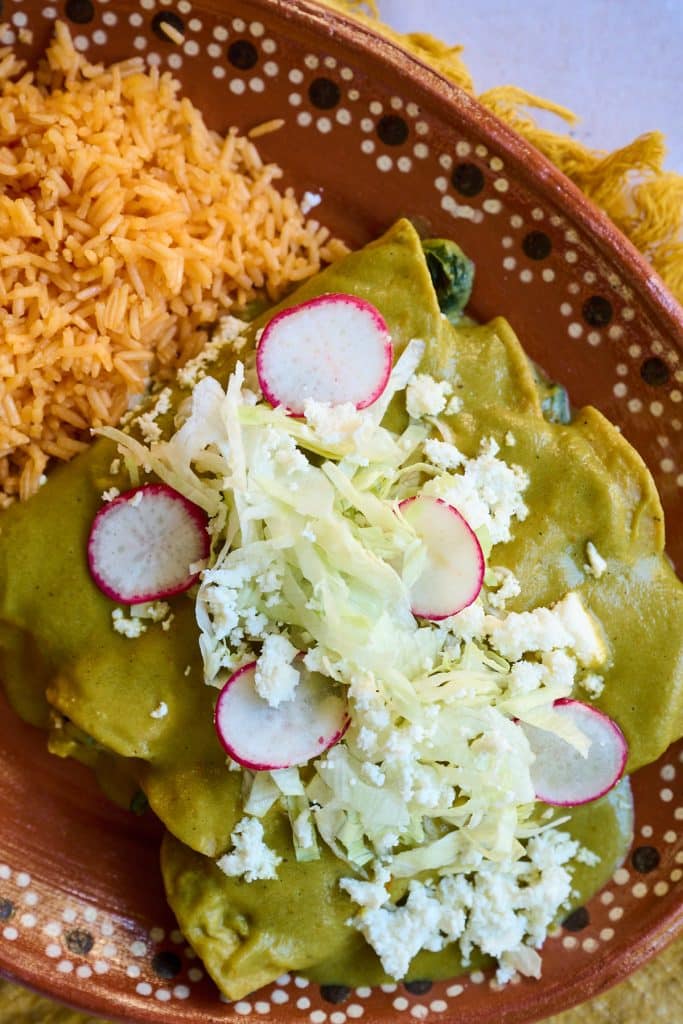
About Las Senadoras Suelen Guisan
This recipe comes from the 1964 cookbook Las Senadoras Suelen Guisar, beautifully illustrated by Alberto Beltrán and introduced by Salvador Novo, a celebrated poet, writer, and culinary historian. Written by Carmen Sánchez Toscano de Moreno, wife of the Senate president from 1958 to 1964, the book is a collaborative effort featuring contributions from 42 senadoras (senators’ wives).
In the introduction, Carmen shares: “As an echo of their husbands’ activities, the senators’ wives (senadoras) would gather to chat and cook… thus, the idea for this book was born.”
The cookbook explores Mexico’s diverse regions and highlights local produce, celebrating the historical influences that have shaped Mexican cuisine.
Novo, Salvador and Alberto Beltrán. Las senadoras suelen guisar. México: Instituto Nacional de Protección a la Infancia, 1964. Pp. 70, 124. [TX 716.M4 S44 1964]
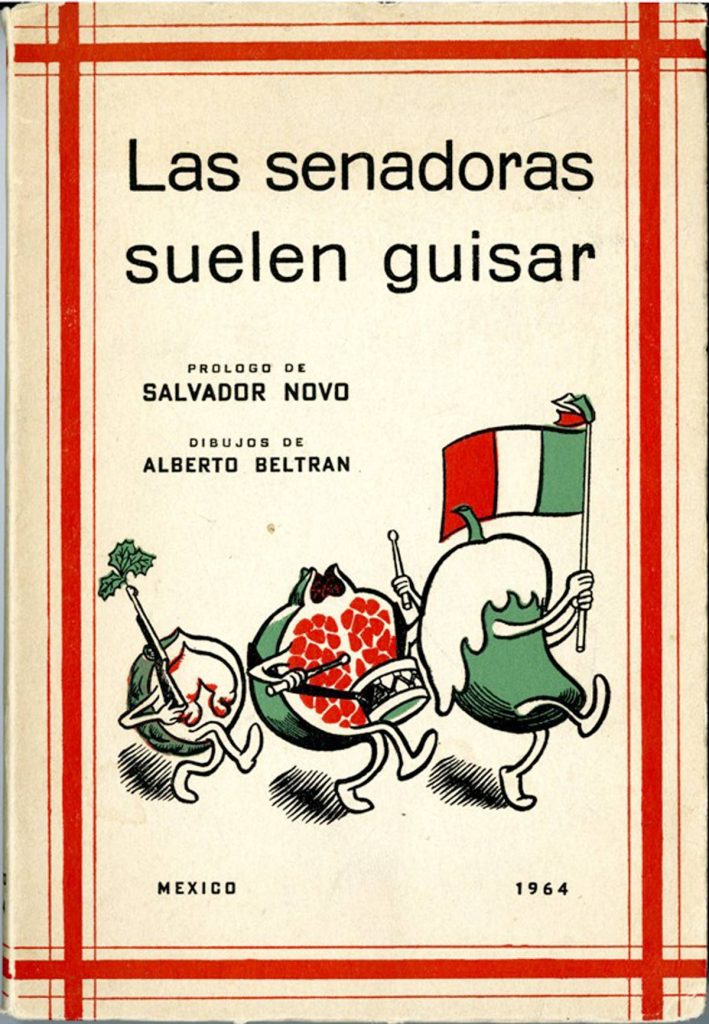
Original Recipe
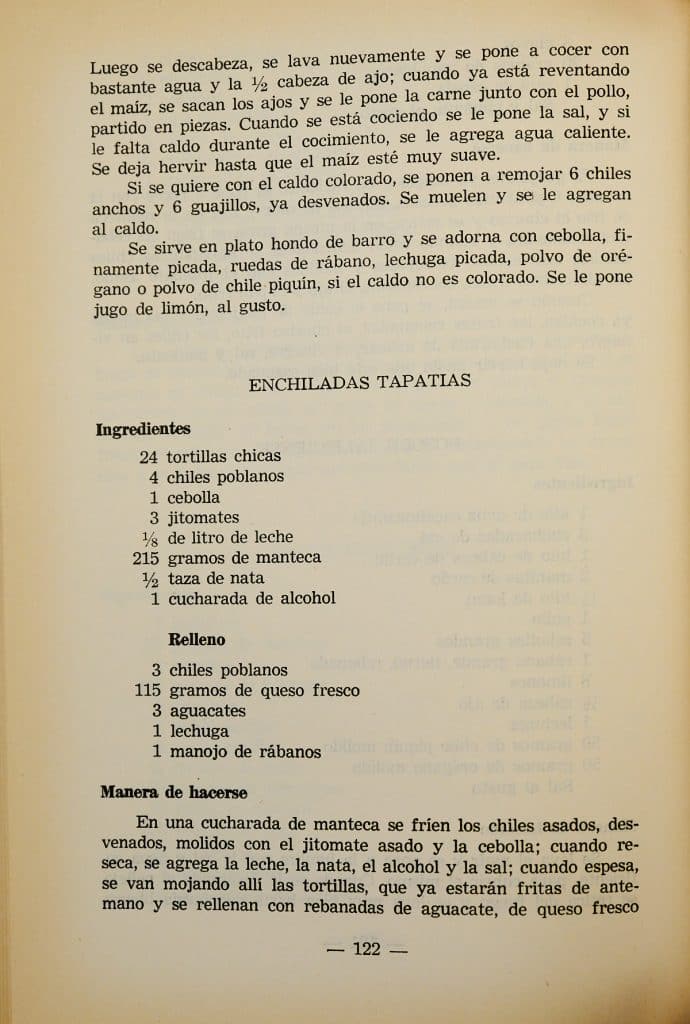
Enchiladas Tapatias (from Jalisco, P. 124)
Ingredientes:
24 tortillas chicas
4 chiles poblanos
1 cebolla
3 jitomates
1/8 litro de leche
215 gramos de mantecas
½ taza de nata
1 cucharada de alcohol
Relleno:
3 chiles poblanos
115 gramos de queso fresco
3 aguacates
1 lechuga
1 manojo de rábanos
Manera de hacerse:
En una cucharada de Manteca se fríen los chiles asados, desvenados, molidos con el jitomate asado y la cebolla; cuando reseca, se agrega la leche, la nata, el alcohol y la sal; cuando espesa, se van mojando allí las tortillas, que ya estarán fritas de antemano y se rellenan con rebanadas de aguacate, de queso fresco y tiritas de los chiles asados y desvenados; luego se enrollan y se sirven bien calientes, adornándose con hojas de lechuga y flores de rábano.
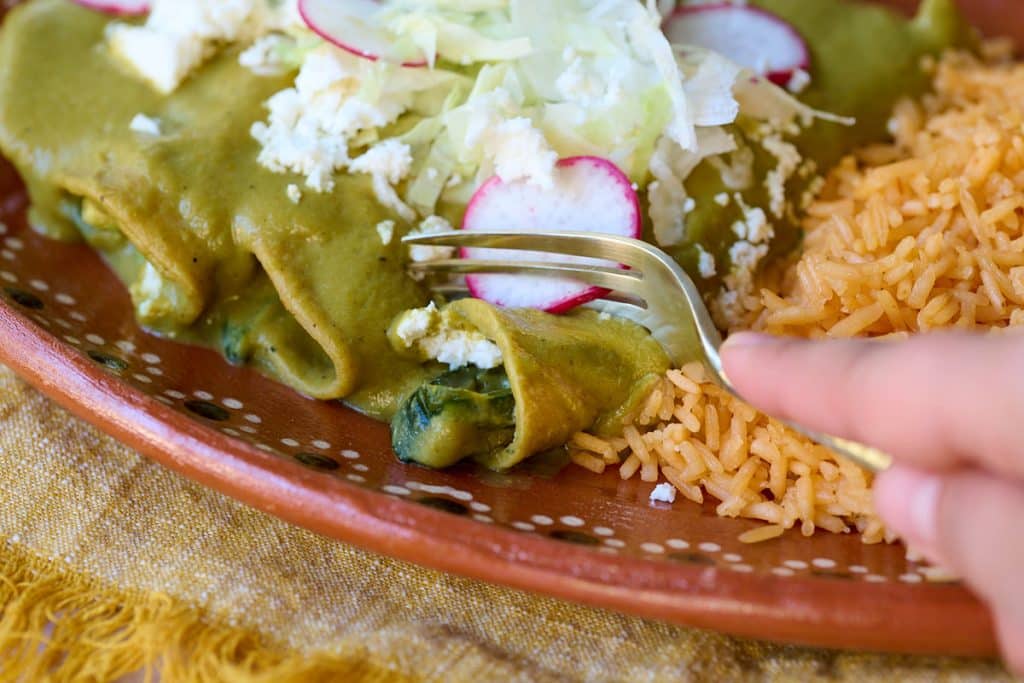
Translated Recipe
Enchiladas Tapatias (from Jalisco, P. 124)
Ingredients:
24 small tortillas
4 poblano chiles
1 onion
3 red tomatoes
1/8 liter milk
215 grams lard
½ cup cream
1 tablespoon alcohol
Filling:
3 poblano chiles
115 grams queso fresco
3 avocados
1 head of lettuce
1 bunch of radishes
Manner of Preparation:
In a tablespoon of lard, fry the chiles (after roasting, coring, and grinding with tomatoes and onions). When dry, add the milk, cream, alcohol, and salt. When the sauce thickens, dip the tortillas (after having fried the tortillas). Then, roll each tortillas around a spoonful of avocado, cheese, and chile strips (which have been roasted). Serve hot, garnished with lettuce leaves and radishes carved into flowers.
Ingredients:
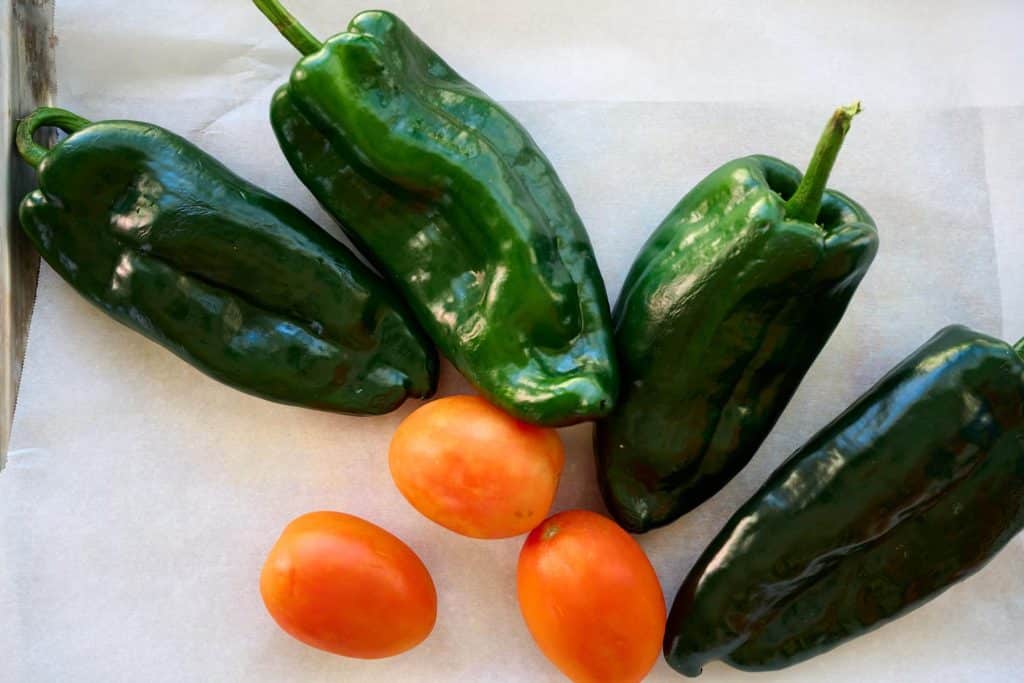
Poblano Peppers: A large mild green pepper native to Mexico, which is typically used to make chiles rellenos. They are easily found at your local grocery store, but if you can’t find them they are also available canned.
Jitomate: The Spanish word for tomato of the Roma variety.
Lard (manteca): Is the Spanish word for lard, rendered pork fat, it was widely used in Mexico during the time period in which the book was written. You can substitute it with vegetable oil or the oil of your choice.
Queso Fresco: Is a fresh Mexican cheese that is mild, soft, and tangy. You can find it at your local Mexican grocery store or the Mexican refrigerated section of the grocery store.
Nata: Is the Mexican version of clotted cream, the layer of cream that forms on the surface when heating raw milk. It is difficult to find, but you can use Mexican crema instead.
Making Enchiladas Tapatías Step by Step
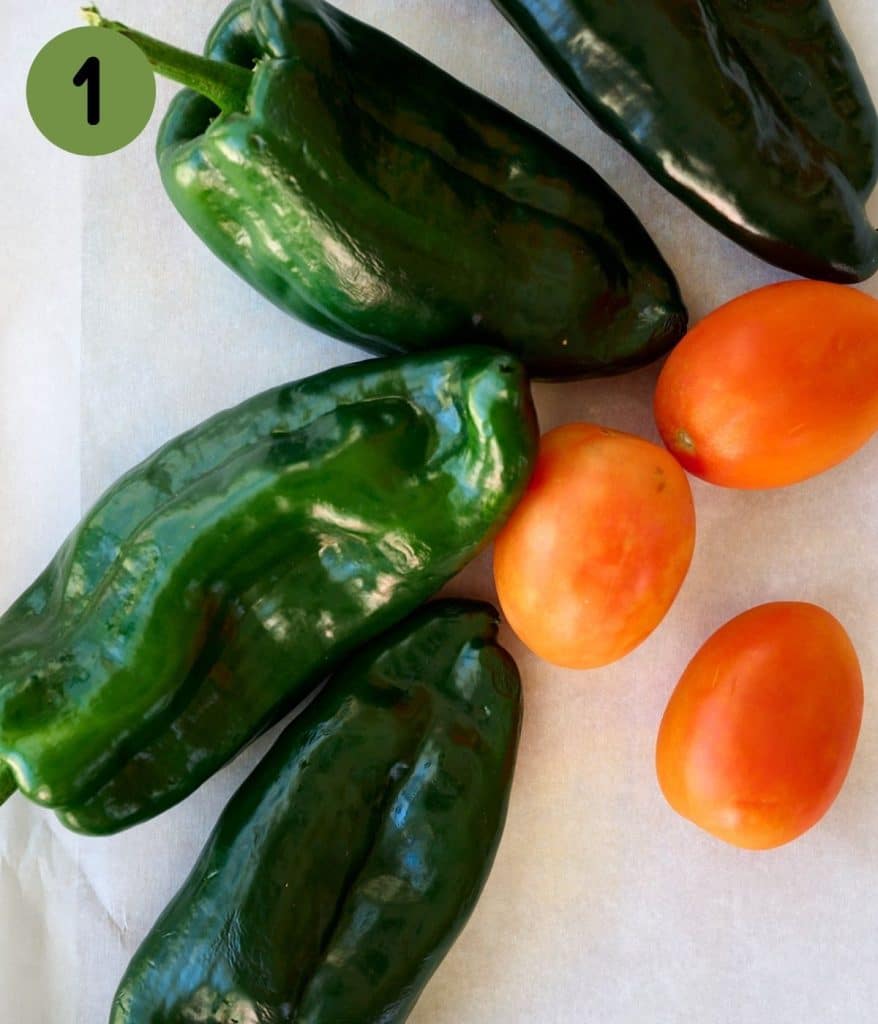
Place the poblano peppers and tomatoes on a sheet pan lined with foil or parchment.
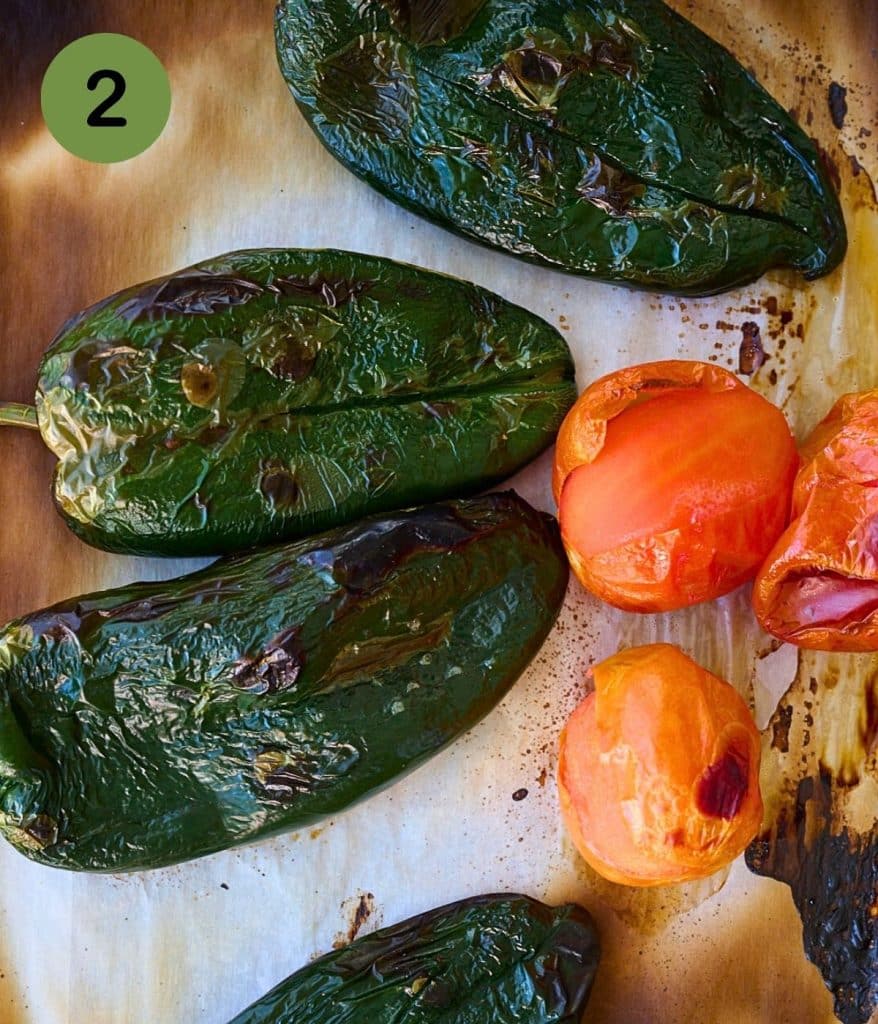
Place under the broiler for 3 to 5 minutes until they are charred all over. Flipping them halfway through.
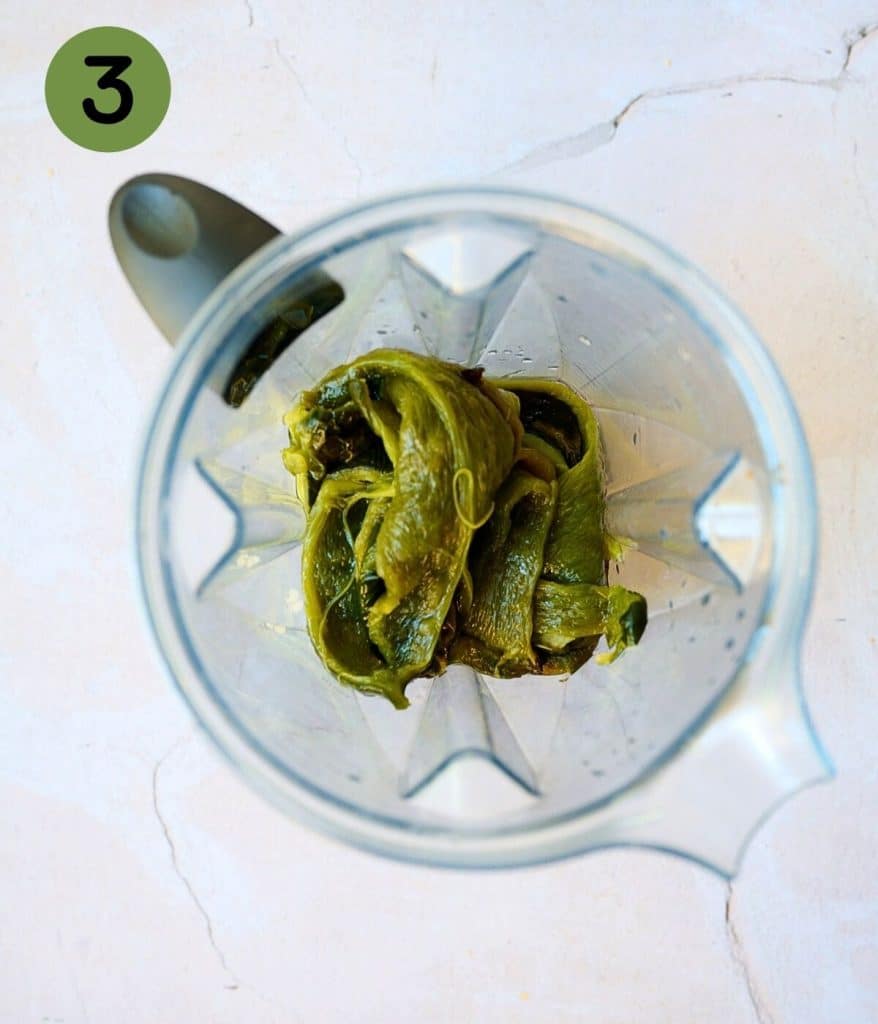
Transfer 4 of the roasted peppers to the blender with the tomato, and onion and puree until smooth.
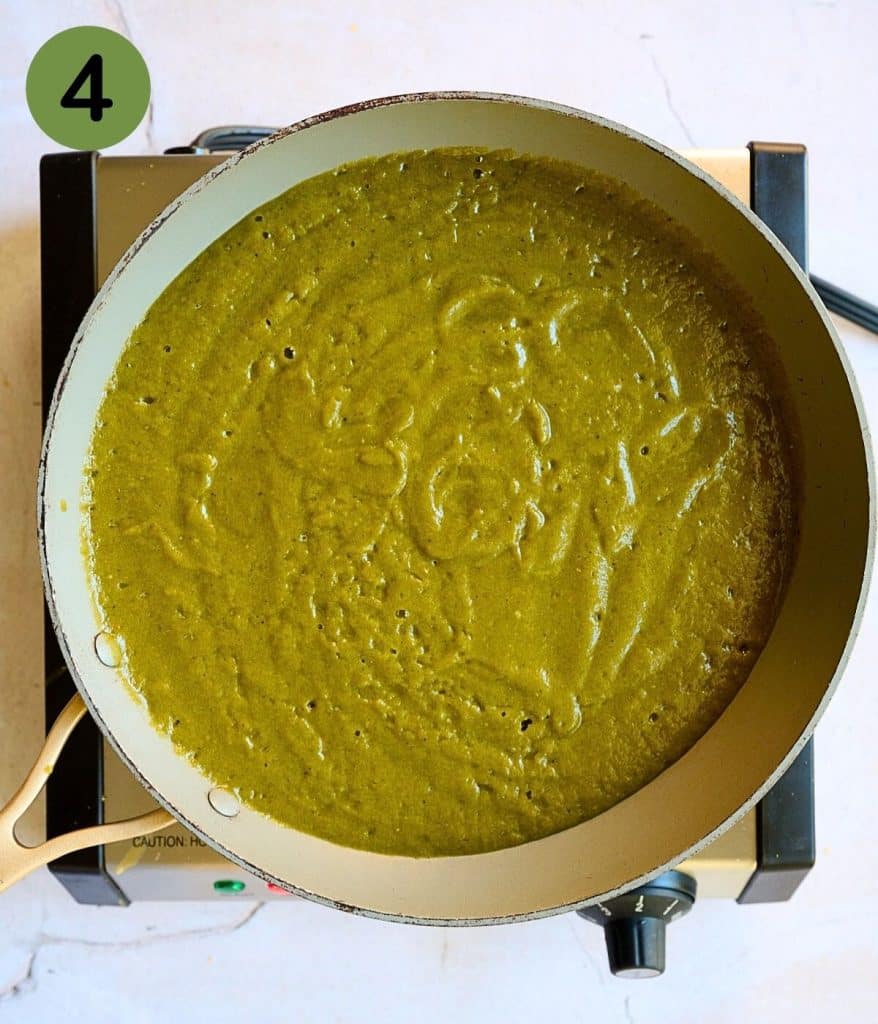
Heat lard over medium low heat, reduce heat to low, and pour in sauce. Simmer for 5 minutes.
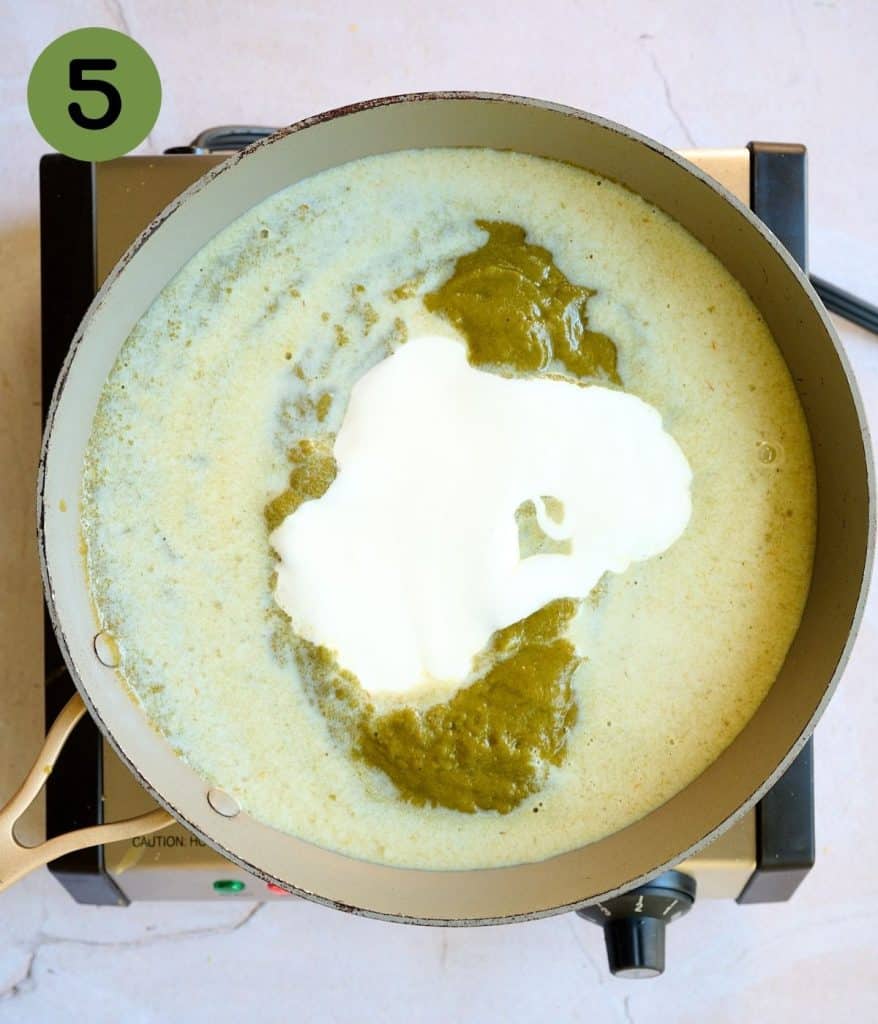
Add the milk, cream, alcohol, and season with salt and pepper.
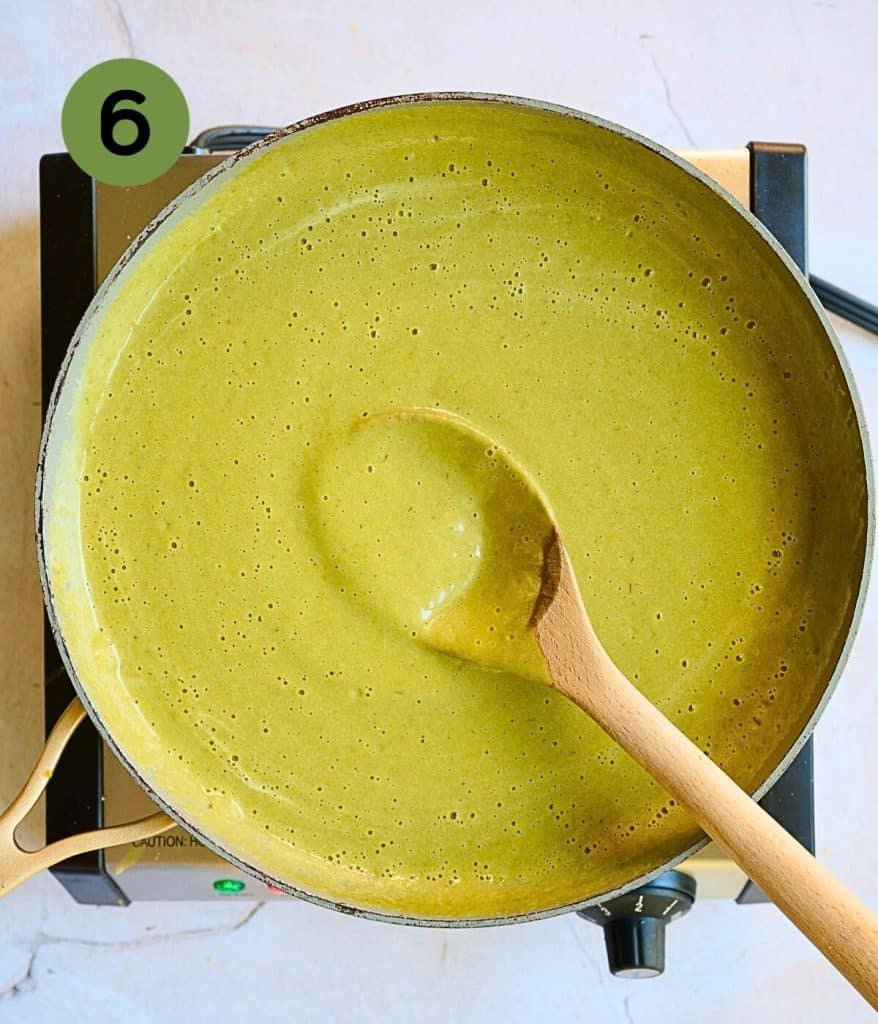
Stir to incorporate the cream.
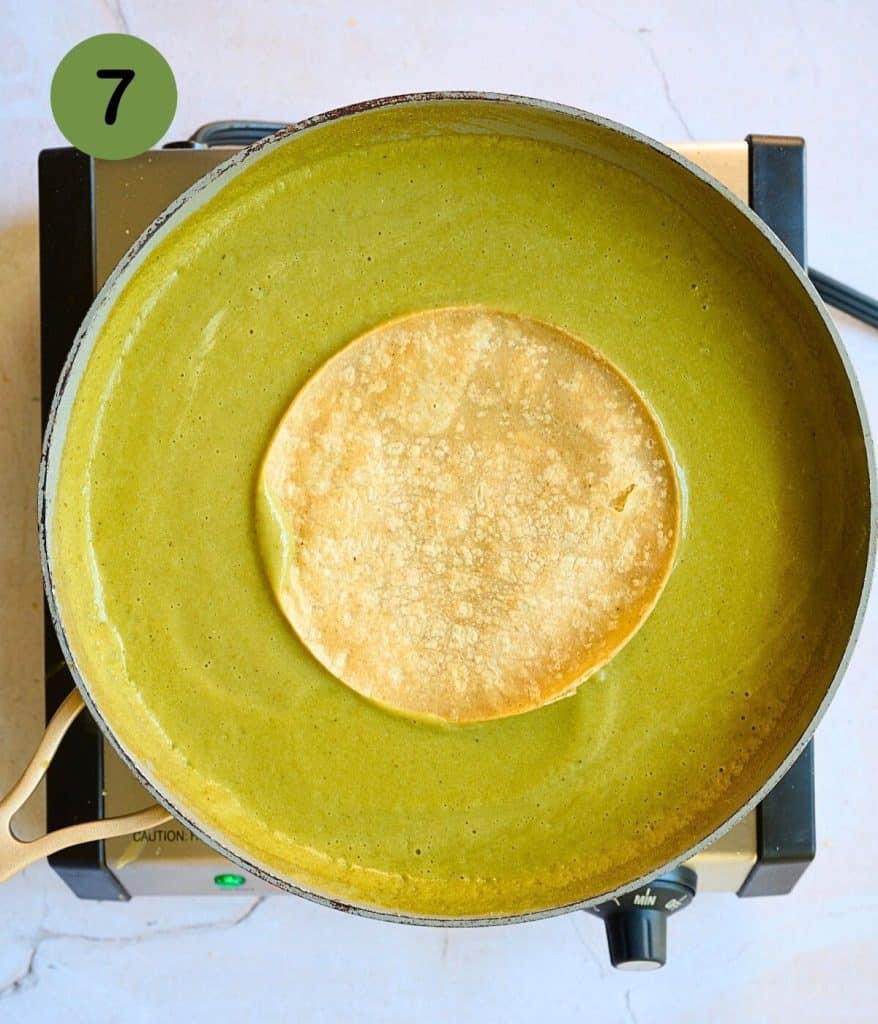
Dip a previously warmed tortilla in the hot sauce, and transfer to a plate.
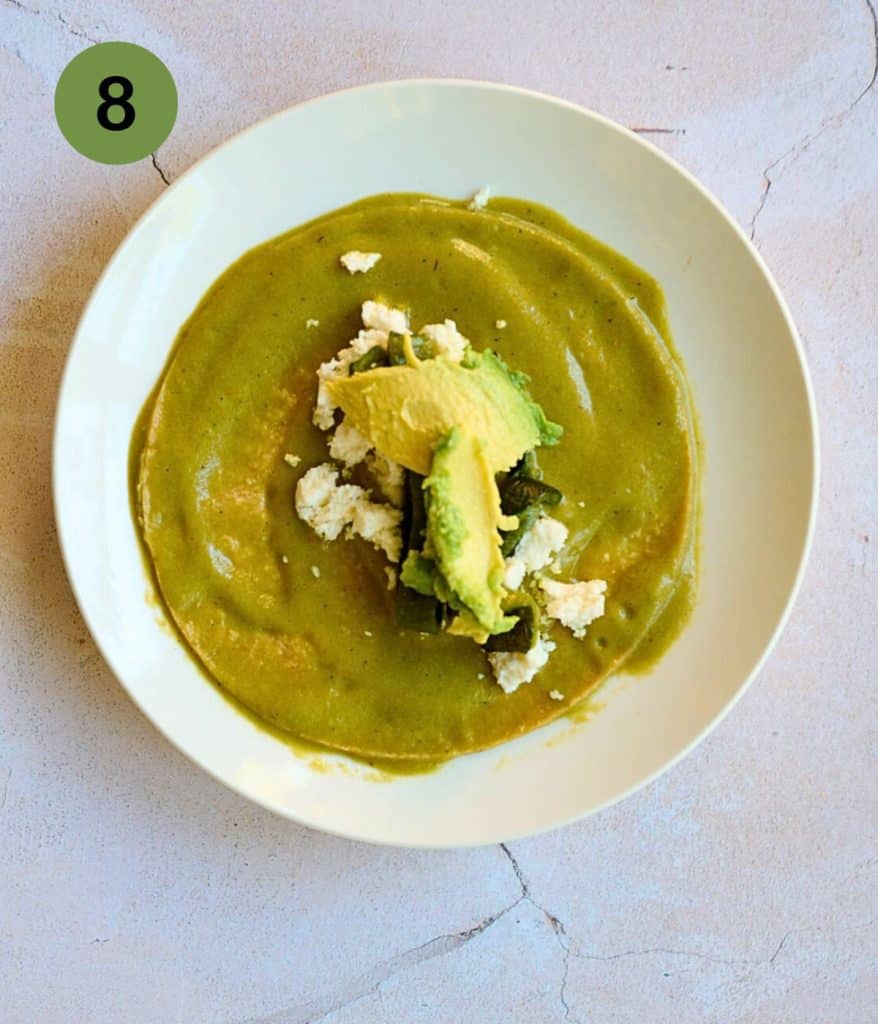
Place a spoonful of avocado, cheese, and chile strips in the center of the tortilla.
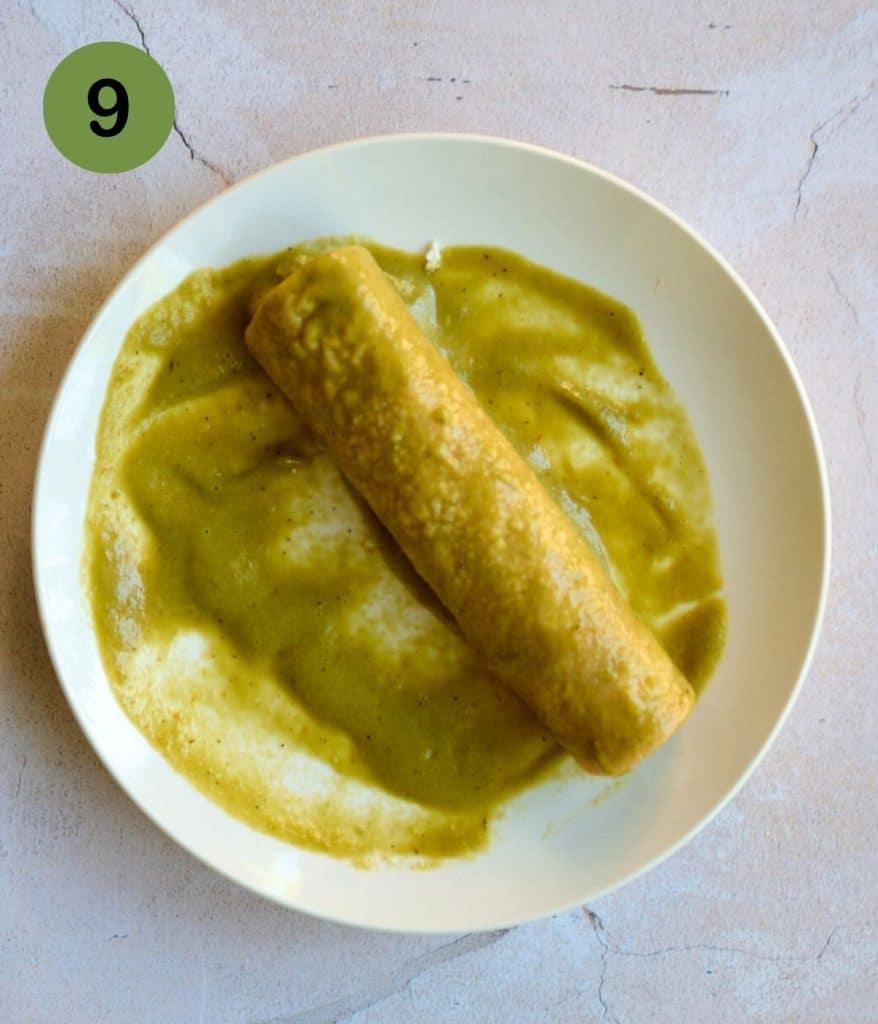
Roll the tortilla around the filling. Transfer to a plater.
Expert Tricks and Tips:
- You can substitute the lard with the vegetable oil of your choosing.
- If you can’t find nata you can use Mexican crema instead.
- The recipe doesn’t state how to heat up your tortillas before dipping them in the sauce. My preferred method is to heat a comal over medium low heat, spray it with oil, and warm the tortillas for 1 minute on each side.
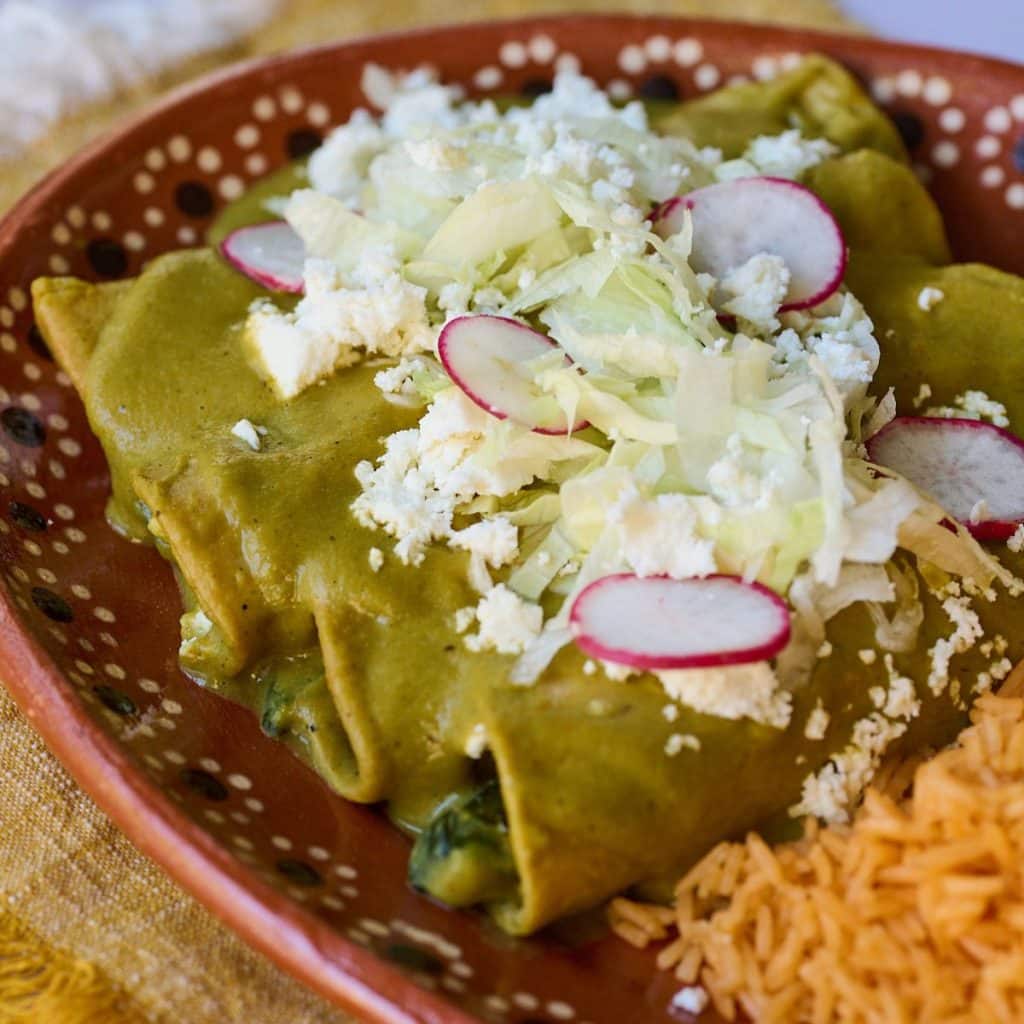
Serving
Serve with Mexican rice or white rice with poblano.
Storing
The enchiladas don’t store well assembled, but if you have sauce left over you can store it in an airtight container in the fridge for 3 to 5 days.
More Enchilada Recipes
Some of our favorite enchilada recipes include Enchiladas Poblanas 1953, Enchiladas San Miguel 1979, Enchiladas de Huevo con Frijol 1939, and
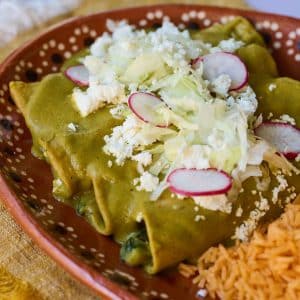
Enchiladas Tapatias
Ingredients
Sauce:
- 7 poblano chiles, divided
- 3 large Roma tomatoes
- 1 large white onion
- 1 tablespoon lard
- ½ cup whole milk
- ½ cup nata or Mexican crema
- 1 tablespoon alcohol
- 24 small corn tortillas
Filling:
- ½ cup queso fresco
- 3 large avocados
Serving
- 1 head of lettuce, shredded
- 1 bunch of radishes, thinly sliced
Instructions
- Preheat your oven broiler to HI. Line a sheetpan in foil and place the 7 poblano peppers and 3 Roma tomatoes on top of the foil. Place it under the oven broiler for 3 to 5 minutes until the peppers and tomatoes are charred all over, flipping them halfway through.
- Remove from the oven and place the poblano peppers in a container with a lid let them sit there for 5 minutes, transfer the tomatoes to the blender. Peel the peppers and remove the seeds. Transfer 4 peppers to the blender, and cut the remaining 3 poblano peppers into strips, and reserve for the filling. Add the onion to the blender, and puree until smooth.
- Heat lard over medium low heat in a large skillet. Reduce heat to low and pour in sauce. Simmer for 5 minutes and add the milk, cream, alcohol, and season to taste with salt and pepper.
- Heat your tortillas, tradtionally this is done by dipping them briefly in hot lard or oil, but you can also heat them up in a comal or griddle sprayed with oil. Dip a tortilla in the hot sauce, and transfer to a plate. Place a spoonful of avocado, cheese, and chile strips in the center of the tortilla and roll the tortilla around the filling. Transfer to a plater.
- Repeat this step with the rest of the tortillas and serve hot, garnishes with lettuce and sliced radishes.
Notes
- I couldn’t find nata so I used Mexican crema instead.
- The recipe doesn’t state how to heat up your tortillas before dipping them in the sauce. My preferred method is to heat a comal over medium low heat, spray it with oil, and warm the tortillas for 1 minute on each side.
- You can use vegetable oil instead of lard.
- The original recipe calls for the radish to be carved into a flower as garnish, but I thinly sliced them instead.

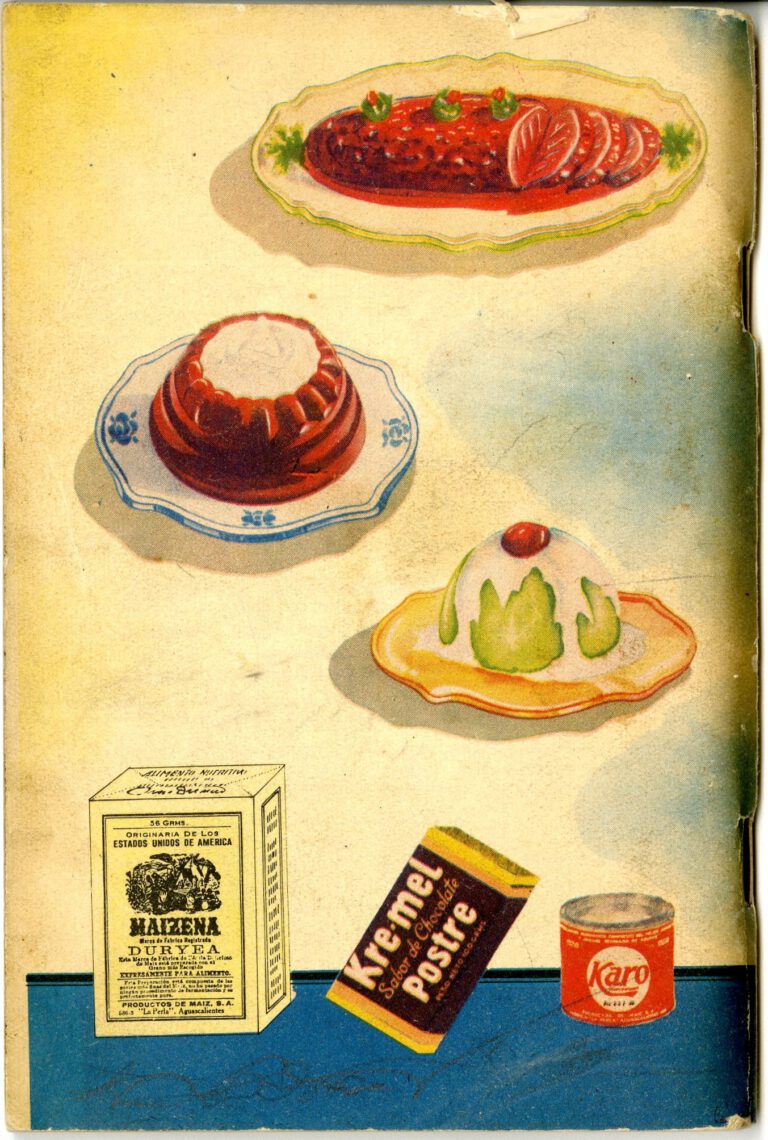
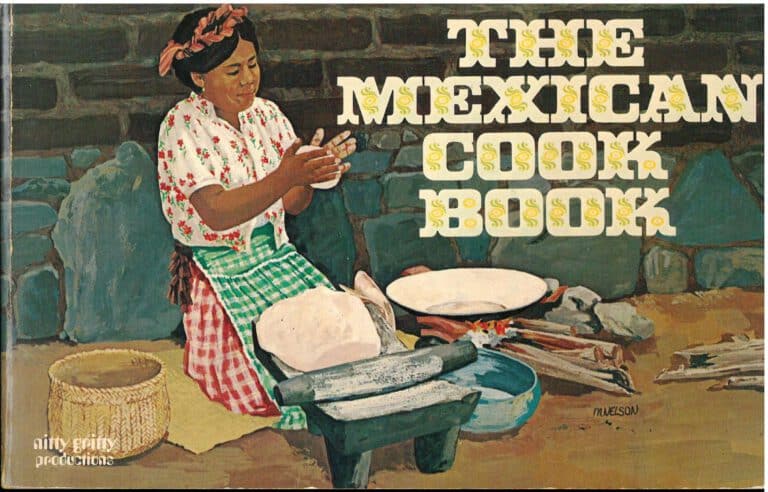
![Front cover of La Cocina de la Vasconia [194?]](https://lacocina.utsa.edu/wp-content/uploads/2012/05/txsau-tx716-m4-c628-1940z-vasconia-cover-2-768x1010.jpg)

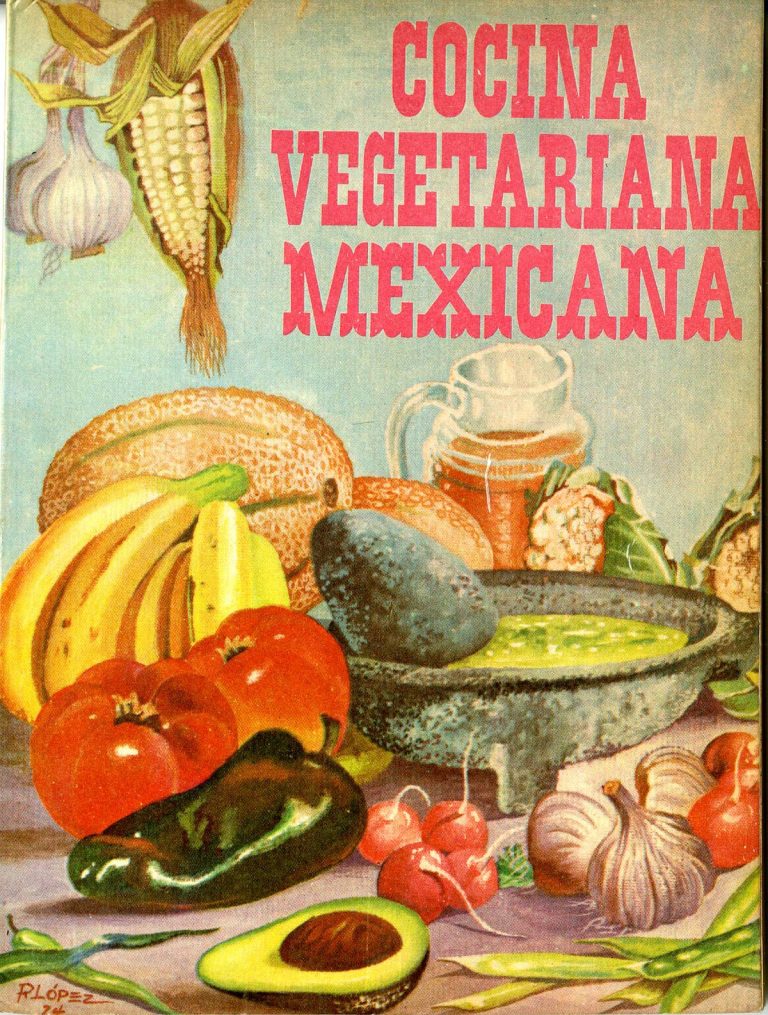
2 Comments